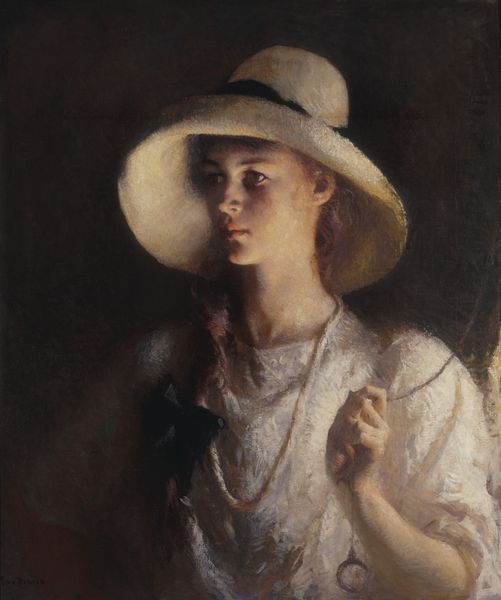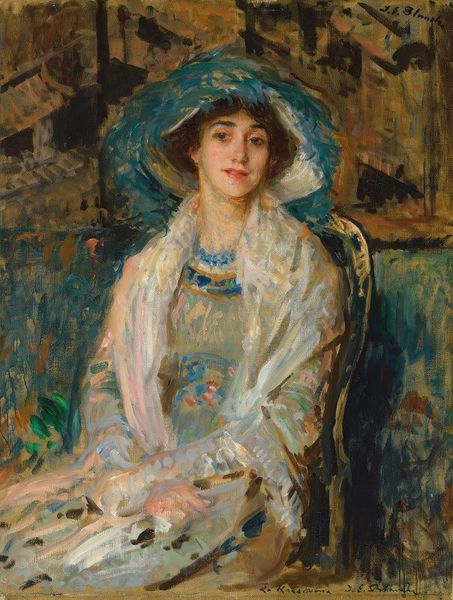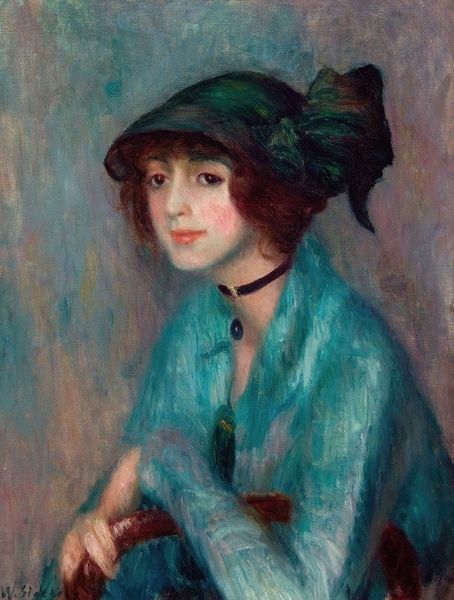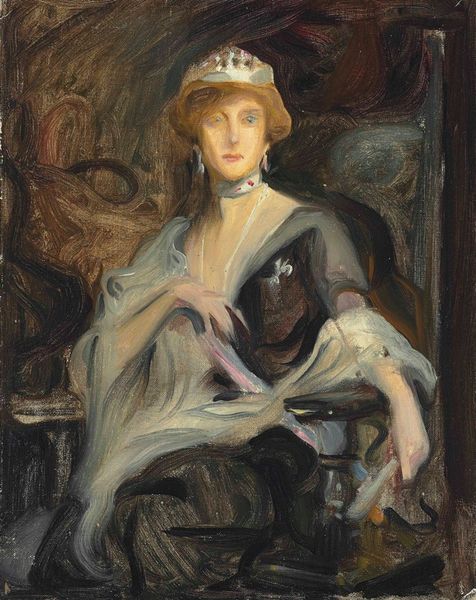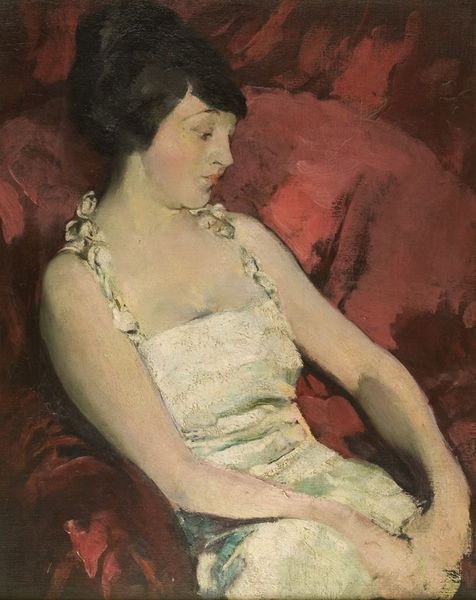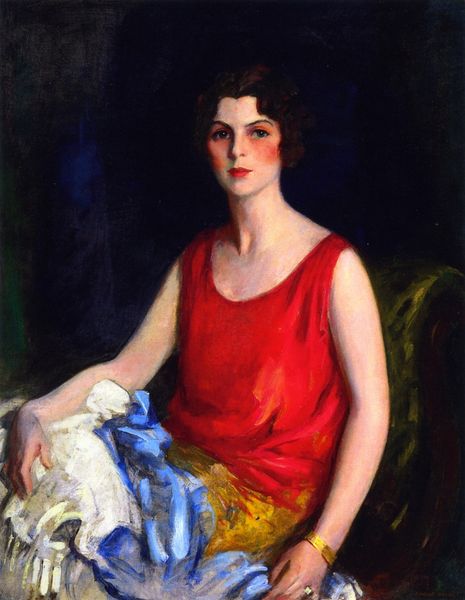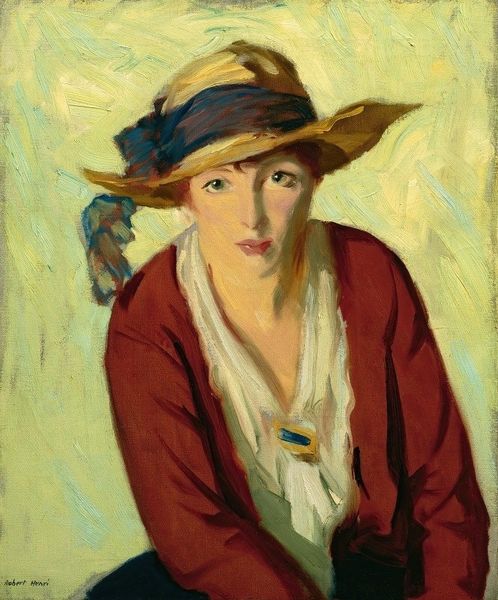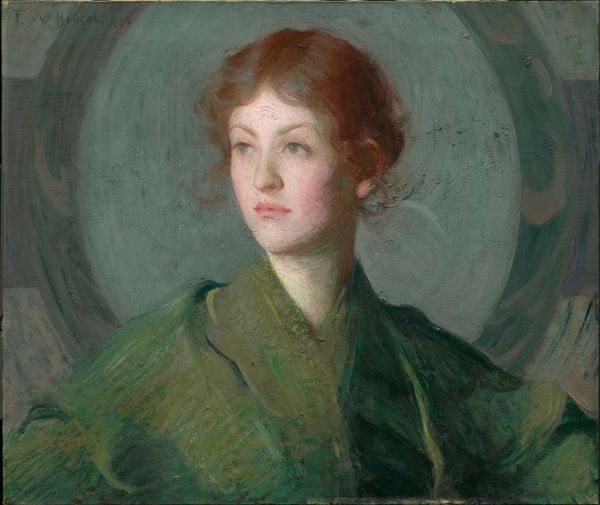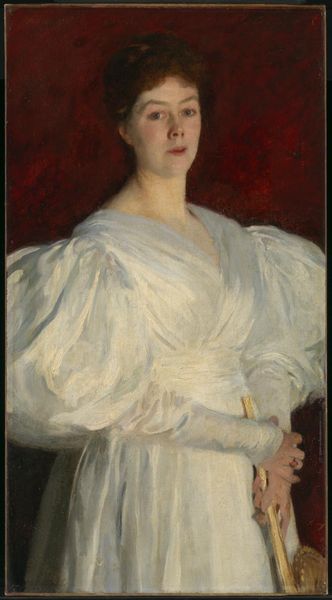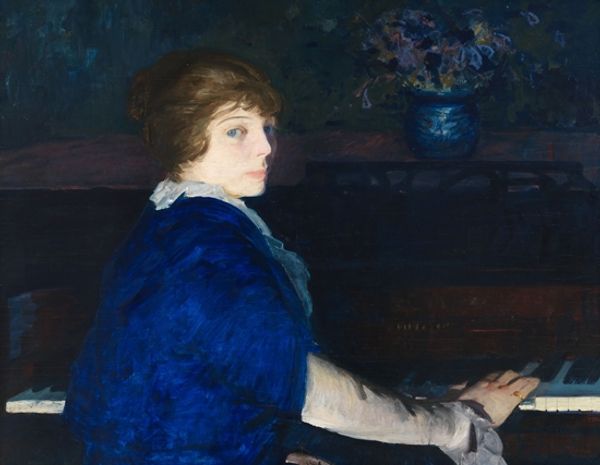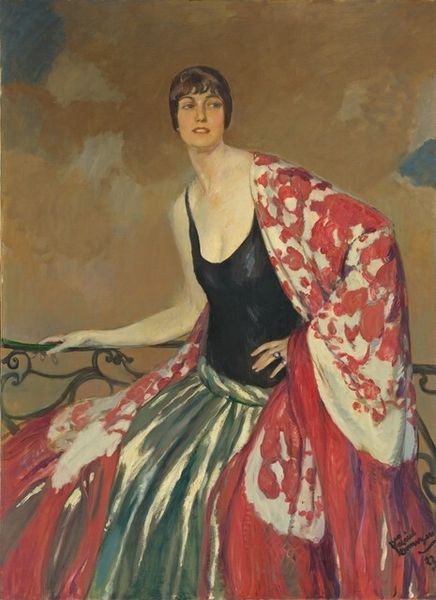
Copyright: Public Domain: Artvee
Editor: This is George Bellows's "Florence Sittenham Davey," painted in 1914. It's an oil painting, and I'm really struck by how the dark background makes the figure seem to emerge so dramatically, like a performer stepping into the light. What stands out to you? Curator: I’m drawn to how Bellows positions Mrs. Davey within the context of the rapidly changing social roles of women at the time. What we might perceive as a simple portrait was actually quite radical. Editor: Radical in what way? The subject's clothing looks quite conventional, even restrained, to me. Curator: Consider the "New Woman" archetype emerging in the early 20th century: increasingly educated, involved in politics, and enjoying greater social freedoms. Bellows was an Ashcan School artist, right? Editor: Exactly. So, you mean this isn’t just a society portrait? Curator: Precisely. It’s how Bellows visually articulates Davey’s assertive, yet still feminine, identity. The light colors draw our attention, but the direct gaze holds it. Think about the settings where a painting like this might have been displayed and consumed. Was it just for private enjoyment, or might it have served to normalize the changing roles of women within public discourse? How might his male audience have responded to this presentation? Editor: That's such a good point; it changes the whole way I see the artwork. I now recognize how the art both shows and shapes opinions of women at the time. Thank you for showing how socio-historical events are always critical in understanding an image. Curator: It's fascinating to consider how artists like Bellows actively participated in shaping the visual language of a changing world. I'm glad we could examine this one!
Comments
No comments
Be the first to comment and join the conversation on the ultimate creative platform.
